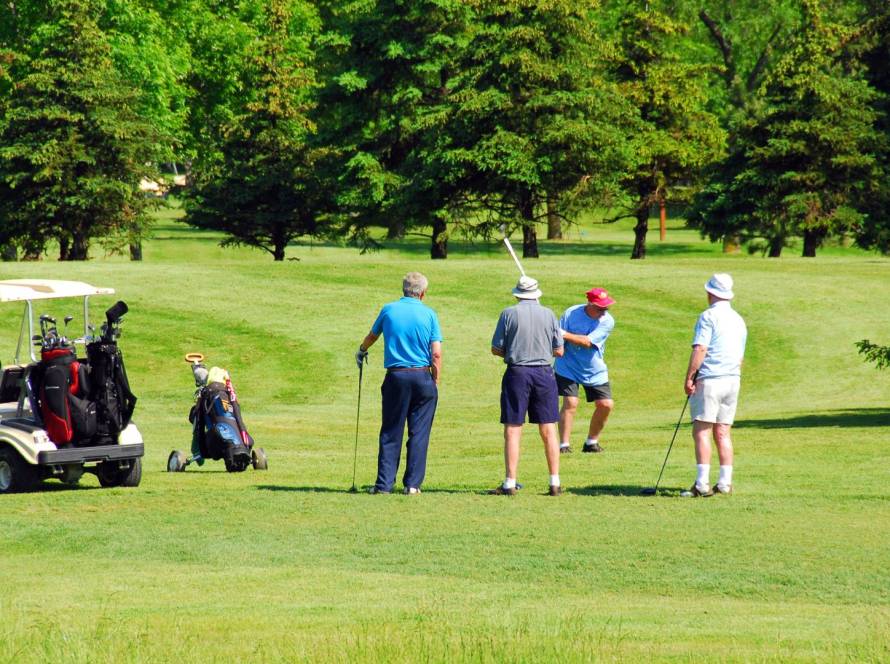
Choosing the right golf club is essential to improving your performance and maximizing your potential on the course. With so many types of clubs available, selecting the right one can seem overwhelming, especially for beginners. Whether you’re just starting out or looking to fine-tune your game, understanding how to choose the right golf club is key. Here’s a guide to help you make the best choice for your swing and playing style.
Understand the Different Types of Golf Clubs
Before diving into the specifics, it’s important to understand the primary types of golf clubs:
- Drivers: Designed for long-distance shots off the tee.
- Fairway Woods: Used for long shots from the fairway or off the tee.
- Hybrids: A mix between irons and woods, great for tricky lies and versatile play.
- Irons: Used for a variety of shots on the course, especially for approach shots.
- Wedges: Specialized irons used for short approach shots, chips, and bunker play.
- Putters: Used for rolling the ball on the green into the hole.
Each club serves a different purpose, and knowing when to use each one is crucial to improving your game.
Consider Your Skill Level
Your skill level plays a major role in selecting the right golf clubs. Beginners often benefit from clubs with larger clubheads, which provide a larger “sweet spot” and more forgiveness on mishits. For example, game-improvement irons or hybrid clubs can help newer players get the ball in the air more easily and hit straighter shots.
Advanced players, on the other hand, may prefer blade irons or players’ irons, which offer more control and precision, but require a more consistent swing. Knowing your skill level helps you choose the right equipment tailored to your specific needs.
Choose the Right Shaft Flex
One of the most important factors in selecting the right golf club is the shaft flex, which refers to how much the shaft bends during the swing. Shaft flexes are typically categorized as:
- Extra Stiff (X)
- Stiff (S)
- Regular (R)
- Senior (A)
- Ladies (L)
The speed of your swing determines the best shaft flex for you. Faster swings (over 100 mph) typically require a stiffer shaft to maintain control, while slower swings benefit from a more flexible shaft to help generate more power and distance.
Understand Loft and Clubhead Design
The loft of the club, or the angle of the clubface, plays a big role in how high and far your shots will go. Higher lofts (like with wedges and short irons) provide more height and spin, making them ideal for approach shots and short game. Lower lofts (as seen in drivers and long irons) generate more distance but are harder to control for beginners.
Clubhead design also varies, with some having cavity backs for more forgiveness (ideal for beginners) and others having muscle backs for precision (suited for experienced golfers). Choose a design that matches your skill level and swing style.
Get Fitted for Your Clubs
One of the most effective ways to ensure you’re using the right golf clubs is to get a professional club fitting. Many golf retailers offer fitting services that measure your height, swing speed, and playing style to recommend clubs with the ideal length, weight, and shaft flex for you.
Custom fitting allows you to maximize your performance by having clubs tailored specifically to your game. This eliminates the guesswork and ensures you’re using clubs that complement your strengths while addressing any weaknesses.
Consider the Course Conditions
Where you play golf can also influence your club selection. For example, if you frequently play on courses with narrow fairways and thick rough, you might opt for more hybrids or higher-lofted woods, which are easier to control in challenging conditions. On the other hand, if your local course has wide-open fairways, a longer driver or lower-lofted woods may be beneficial for maximizing distance.If you often play in windy conditions, clubs with a lower ball flight (like a lower-lofted driver) can help keep the ball under the wind, while wedges with more loft help you stop the ball quickly on firm greens.
Don’t Overlook Your Putter
While most players focus on drivers, irons, and wedges, the putter is the club that will likely get the most use during a round. Choosing the right putter can dramatically affect your performance on the green. Putters come in various shapes, including blade, mallet, and heel-toe designs. Mallet-style putters provide more forgiveness and stability, while blade putters offer more precision for experienced players.
When selecting a putter, consider its length, balance, and weight, as well as how comfortable it feels in your hands. Try out a few different styles to see which one helps you align putts more easily and gives you more control.

Balance Your Golf Bag
The rules of golf allow you to carry up to 14 clubs, but not all players need that many. Beginners, for example, might benefit from carrying fewer clubs to keep things simple and focus on developing their swing. For instance, a basic set might include a driver, a hybrid, a few irons, a wedge, and a putter.
As you improve, you can expand your set to include additional wedges, fairway woods, and specialty clubs to cover a wider range of shots.
Find the Right Fit for Your Game
Choosing the right golf clubs can make a world of difference in your game, helping you hit longer, straighter shots and lowering your score. By understanding the different types of clubs, considering your skill level, and getting fitted, you’ll be well on your way to building a set that works for you. Whether you’re looking to refine your short game, increase distance, or find more consistency off the tee, the right clubs will set you up for success.
Take the time to test different options and get fitted to ensure your clubs are helping—not hindering—your performance on the course. After all, with the right equipment, you can unlock your true potential and enjoy the game even more.


